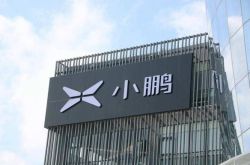AI Cloud War Escalates to 'Moat Stranglehold Battle': Volcano Engine's Model Matrix: A Shield or a Spear?
![]() 05/19 2025
05/19 2025
![]() 537
537
On the trajectory of cloud computing and AI services, Volcano Engine, the 'late entrant', is striving to ascend.
Recently, Volcano Engine officially unveiled the Seedance 1.0 lite video generation model, the Doudou 1.5 visual deep thinking model, and enhanced the Doudou music model. It aims to construct a robust AI model matrix and agent tools, serving as a 'pioneer axe' to carve a path through the thorny landscape of intelligent transformation across multiple industries.
Seedance 1.0 lite, for instance, achieves a fine balance between generation speed and film-grade image quality, along with camera movement effects, thanks to its small parameter architecture design. This significantly lowers the creation threshold and showcases Volcano Engine's prowess in model innovation. However, despite occasional highlights in model innovation, it struggles with challenges in brand recognition, technical heritage, and customer resources.
Whether Volcano Engine's multi-modal AI matrix can reshape the battlefield remains a significant question mark.
'Agent Year' Examination
The year 2025 is deemed the 'Agent Year' in the industry. In this pivotal year, AI will leap from perception and generation to task execution, officially entering the era of agents. At this critical juncture, Volcano Engine faces an unprecedented opportunity and a stringent 'exam'.
On one hand, as the intelligent transformation of various industries accelerates, the demand for agents capable of deeply understanding business logic, making autonomous decisions, and efficiently executing tasks has surged. Volcano Engine can leverage its model innovation to develop agent solutions tailored to different industry scenarios.
On the other hand, Volcano Engine is actively deploying AI cloud-native infrastructure to lay a solid foundation for tackling the challenges of the Agent era.
For example, to address the large-scale inference demand brought by Agent applications, Volcano Engine has developed the AI cloud-native ServingKit inference suite. This suite reduces GPU consumption by 80% compared to traditional solutions, not only enhancing inference efficiency but also effectively lowering inference costs for enterprises.
However, in embracing Agent opportunities, Volcano Engine must also confront numerous formidable challenges.
The Agent Year heralds a new phase in AI technology centered on multi-modal interaction, autonomous decision-making, and scenario-based services. Users' expectations for AI models have shifted from single-task execution to deep cognition and reliable service capabilities in complex scenarios. This transformation poses triple challenges to the technology provider.
Firstly, deep thinking ability has become a rigid requirement. Users demand models with logical reasoning, multi-turn dialogue coherence, and common sense judgment. Traditional pattern-matching-based responsive models will struggle to meet the complex decision-making needs of enterprises. Secondly, multi-modal fusion ability determines scenario adaptability. Models supporting only single-modal input and output will experience significant performance degradation in cross-modal tasks. Thirdly, inference cost and latency are crucial for commercialization. As enterprise-level applications become 30% more sensitive to cost per thousand tokens, the end-to-end response time must be compressed to within 500ms. The existing large models' delays of up to several seconds and exponentially increasing computational power consumption will directly lead to customer churn.
As an AI infrastructure service provider, Volcano Engine must not only breakthrough dynamic knowledge distillation technology under the MoE architecture to balance model capacity and inference efficiency but also reconstruct the multi-modal data flywheel to bridge the modal gap. It must also seek optimal cost solutions in self-developed DPU chips and heterogeneous computing scheduling. In this technological arms race, any local shortcomings will lead to the overall collapse of the customer value chain.
The Cloud Market: Fragmented and Highly Competitive
With Agents gaining popularity, technology giants, startups, and research institutions have entered the market, vying for a share in this emerging field. In China, leading companies like Alibaba Cloud, Tencent Cloud, and Baidu Cloud have increased their R&D investment in AI Agents and launched a series of related products and research outcomes.
Alibaba Cloud fully supports MCP (Model Context Protocol) service deployment and invocation on the Bailian platform, enabling users to build Agents connecting MCP services in just 5 minutes. Over the next three years, it will invest over 380 billion yuan in cloud and AI hardware infrastructure. Tencent Cloud has released the 'AI Development Suite' that supports MCP plugin hosting services, helping developers build business-oriented AI Agents in 5 minutes. Baidu has launched the Wenxin large model 4.5 and Wenxin large model X1 and is making strides in the MCP Server field, allowing developers to meet various travel scenario needs through Baidu Map MCP Server.
In the fiercely competitive Agent market, domestic giants have already established formidable competitive barriers with their long-accumulated technology, vast customer base, and comprehensive ecosystem. Volcano Engine faces considerable competitive pressure.
From a technical standpoint, although Volcano Engine has made progress in model innovation and AI cloud-native infrastructure, it still lags behind leading cloud vendors in underlying core technologies such as algorithmic foundation research and chip adaptation optimization.
This limits Volcano Engine's service capabilities when facing complex and ever-evolving enterprise-level agent demands that require high technical accuracy and stability. For instance, in scenarios like risk prediction in the financial industry and precise diagnosis in the medical industry, the accuracy and stability requirements for models are almost extreme. Volcano Engine must continue to invest in underlying technologies and enhance its technical heritage to better serve these high-end customers.
Volcano Engine also faces stern tests in customer resource expansion and ecosystem construction.
When selecting agent solutions, large enterprise customers often prioritize the customization ability, safety, and reliability of the solutions, as well as successful case endorsements. Volcano Engine has yet to establish sufficient advantages and reputation in these areas, often facing fierce competition and struggles when acquiring orders from large enterprise customers.
Moreover, compared to the mature and comprehensive ecosystem of leading cloud vendors, Volcano Engine has a relatively small number of ecological partners, and the ecological synergy effect has not been fully leveraged. This restricts the promotion scope and application scenario expansion of its agent products and services to a certain extent.
In summary, Volcano Engine has much room for improvement in brand recognition. Many enterprise customers lack trust in its brand when choosing cloud services and agent solutions, preferring established vendors with a long market presence. In this unpredictable Agent Year, Volcano Engine not only holds the 'admission ticket' brought by new opportunities but also bears the heavy burdens formed by numerous challenges from industry giants.
AI Era: Cloud Competition in a 'Life-or-Death Situation'
With the deep integration of AI and cloud computing, industry competition has entered a white-hot 'deep water zone'. The ultimate outcome of cloud competition in the AI era is not a single-dimensional battle but an extreme optimization competition spanning from underlying large models to the upper-level application ecosystem. This comprehensive and systematic value construction forms a difficult-to-replicate moat.
To secure a firm footing and breakthrough in this fierce competition, Volcano Engine, as one of the players, must deeply explore the value of AI and thus complete its capability landscape.
Firstly, from the perspective of underlying large models, although Volcano Engine has launched the Doudou large model, covering vertical models such as large language, speech, and vision, and has been validated in internal 50+ business scenarios, achieving good results in evaluations by authoritative institutions like Zhiyuan, there is still a gap compared to the industry's top level.
Secondly, the engineering efficiency of the middle layer is directly tied to service performance and cost. Although Volcano Engine is actively deploying AI cloud-native infrastructure, there is still room for improvement compared to leading vendors such as Alibaba Cloud in terms of large-scale data center construction, network communication optimization, and intelligent operation and maintenance system development.
Furthermore, the upper-level application ecosystem is crucial for the value of cloud services to materialize. Volcano Engine has introduced real-time conversational AI and other application solutions, integrating large models, speech recognition, speech synthesis, and other technologies. Through Volcano Engine RTC, it achieves efficient collection, processing, and transmission of audio and video data, with applications in social companionship, children's companionship, oral teaching, smart hardware, intelligent customer service, and other scenarios. However, it currently has a relatively small number of ecological partners, and the ecological synergy effect has not been fully leveraged.
For Volcano Engine, the essence of this final battle is to leverage AI as a fulcrum to achieve an overall leap in technological capabilities, ecological resources, and business models. Only by accomplishing this paradigm shift can it emerge victorious in the cloud war of the AI era...





